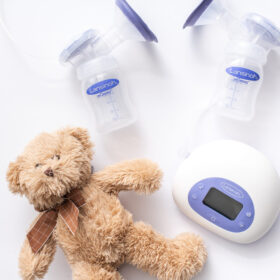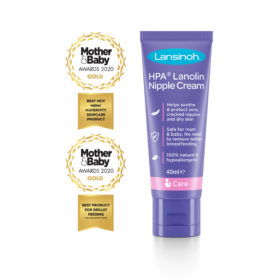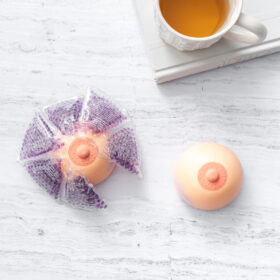Rådgivningsartikler
- Hjem
- Rådgivningsartikler
- Graviditet
- Labour And Birth
Labour And Birth

First signs of labour and when to go to the hospital or birth centre
Your bag of waters can stay intact right up until your baby is born, infact some baby’s can even be born in the bag of waters, known as being born “in the caul”, it’s actually a sign of good luck. If your waters do break be sure to take note of the colour, your midwife will want to know whether the water was clear, blood stained or green. Most women will start labour by experiencing niggly mild contractions, which can sometimes feel like lower back ache initially. If you’re in labour these pains will start to become stronger, longer and more frequent. You’ll be able to tell the difference between them and Braxton Hicks contractions because the “practice” contractions generally slow down or stop when you lie down or have a glass of water for example. In some cases you may experience loose bowels as a sign of labour.
Your discharge will also appear brown and bloody, also known as a “bloody show”. This is when the mucus plug that blocks the cervix is released, this is a sign that your labour is starting.
During the early stages of labour your cervix thins and starts to dilate on average a centimetre an hour for your first baby. You need to be ten centimetres dilated before you can push your baby into the world.
When the onset of labour starts it can be a very exciting time for you but you need to remember it’s going to be a long and probably not an easy process. On the day make sure you get lots of rest or at least try to, maybe take a walk or a long soak in the bath, drink plenty of fluids and eat light meals.
When it’s time to speak to your midwife will depend on you and your circumstances as I’m sure you have discussed this with your midwife. If you go in to hospital during early labour there is a chance you may be sent home to wait a bit longer until your further dilated. If you feel you need to go to hospital don’t hesitate to ring your midwife and they will help you decide what you need to do. A popular technique women follow is the 1-5-1 rule – this is when your contractions last a minute or more and are less than 5 minutes apart but you have been experiencing them for an hour. Most of all be patient and calm, as you’re at the point when your get to meet your son/daughter you have been carrying for 9 months.
Upon arrival
Take your own notes and report to the maternity unit’s admissions desk. You will then be taken to the labour ward or your room, where you can change into a hospital gown or other clothes of your own you have brought.
What to wear in labour
During labour we suggest that you wear loose clothing which allows you freedom of movement. You can wear a hospital gown, but most women prefer to wear a large T-shirt or an old nightdress (preferably cotton). Don’t buy anything too expensive to wear in labour, you’re probably going to want to throw it away afterwards. You will probably be free to wander around while you are in labour, so you may want to bring extra clothing to keep warm. You will probably want some slippers of comfortable footwear, socks are also a must, many mums complain of cold feet in labour.
Examination by the midwife
When you see the midwife she will ask you what you have been experiencing so far, for example how strong your contractions have been and how often.
After this they will have some regular check-ups such as your pulse, blood pressure, temperature and possibly your urine. They will also feel your abdomen to see what position your baby is in and their heart rate.
Finally an internal examination will be done to see how much you have dilated and how close you are to the birth.
These checks will be repeated throughout the labour to make sure both you and your baby are fine and to assess how you are progressing. Your midwife is your main contact, if you have any questions or need some advice don’t hesitate to ask.
Water births
Some maternity units may be able to offer you a water birth in one of their birthing pools. If this is something that interests you, your midwife can tell you the advantages and disadvantages of the task.
Some women find this a more relaxing way to give birth, however it will depend on your local area as there are only a few available and they need to be requested and may be in use by another mother at the same time.
Birthing positions
Certain birthing positions can assist in the progress of your labour, for example standing, sitting or kneeling on all fours can all assist to help your baby progress through the pelvis, this is thanks to the magic of gravity. Other women prefer to be lying down, if you feel you need to lie down it is best to lay on your left side as this can again help you to progress.
Some delivery rooms have been made more homely and have birthing balls, stools or mats for you to use. Some also have showers and baths available which can help ease the pain in the early stages of labour. Pick the one which is the most comfortable for you.
Pain relief in labour
You will be offered a few ways to help with discomfort and pain during labour. In early labour the best things to do are walk around, have a bath or you may be offered a TENS machine. Further in to labour you may be offered pethidine, an epidural or gas and air.
Gas and air is used only during a contraction, you suck the air in through a mouthpiece and it temporarily relives the pain during a contraction. Pethidine is administered by an injection into your leg or bottom. It lasts for a total of 4 hours and can make you feel a little spaced out and sleepy, it doesn’t take the pain away completely. An epidural is a thin tube placed in the back in the spaces between your vertebra. Medication is administered to make your body numb from the waist down. You will be unable to move from the bed and will need to have a drip in your arm. Your baby will also need to be continuously monitored during labour.
The different types of pain relief don’t work for everyone, some will work better for you than others but this is something you will discuss with your midwife. Some types of pain relief might not appeal to you but keep an open mind and discuss any concerns you have with your midwife and remember there is more than one option available.
C section/caesareans
A natural vaginal birth is the preferred method for any birth as it’s far safer and better for your future fertility. If you do however need a caesarean it’s a common and safe procedure and if the life of either you or your baby is in danger it can safe your or theirs life. There are two types of caesareans: A C-section which is planned is called an elective caesarean section and the other type is an emergency caesarean section.
Here are a list of possibilities that would mean a caesarean possible:
- Abnormal presentation i.e. Breech Baby
- Problems with placenta i.e. low lying placenta blocking exit of uterus
- Previous C-section (you get the choice with a 2nd baby)
- Medical complications
- Failure to progress in labour
- Failed induction of labour
- Failure of forceps or ventouse delivery
- Expected large baby 4kg or over
- Pre-eclampsia
- Baby with known high risks or abnormalities
- Some STD’s
- HIV
- Emergencies in labour – both maternal and foetal
- Multiple births (get the option)
You will of course discuss what is best for you with your doctor but there are things that can affect the decision, the following factors can cause complications:
- If you suffer from any medical conditions
- If you are overweight or obese
Relaterede kategorier
Relaterede produkter
-

Dobbelt Elektrisk Brystpumpe
Lansinoh's 2-i-1 Elektriske Brystpumpe er den allerbedste løsning for mødre, der ønsker komfort, fleksibilitet... Læs mere -
... Læs mere -

HPA® Lanolin Brystvorte creme
Ømme brystvorter er meget almindelige under amning og kan ofte være et resultat af... Læs mere -

TheraPearl® 3-i-1 Brystomslag
De fleksible og genanvendelige... Læs mere

